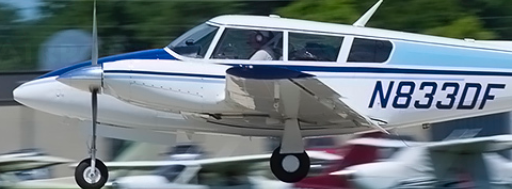
Jeff and I arrived at the airport today to prepare for a flight from Wilmington Delaware to Hilton Head South Carolina. Since this was my first trip in this airplane with this company where passengers would be aboard, I got there three hours early to get the airplane ready.
I took out my phone and did my preflight by the checklist. I find myself routinely using all of the checklists for this complex machine, and it is helping me know where to look. Also helps to develop solid patterns of behaviour.
Atlantic Aviation was right on time and pulled us out about an hour before the passengers arrived. I learned where the ice machine was and loaded the drink cooler with soft drinks and water. Our two passengers were golfers today, and the weather for this first trip was perfect VFR.
Loading Baggage: When the passengers arrived, I followed behind Jeff to learn how they’d been loading the golf clubs and bags. There was no reason to experiment with various configurations when the previous crew had experience with all this. I wanted to get as much weight up forward to meet my planned weight and balance, and he knew how to do this efficiently. Basically we took the clubs out of the bags and loaded them separately, with the drivers going in the rear baggage area due to their length.
Departure and Climb: We loaded up the passengers and departed uneventfully, climbing to FL180. Climbing through 500′ I did my first power reduction – just like in my piston twin. In this case, however, I reduced the torque to 1000# and then brought the props back to 2200 rpm; setting prop sync ON. Reducing the prop RPMs gives them a bigger bite, so the torque came back up toward 1,100#. I adjusted the power again looking at fuel flow and torque, with the goal of 250pph on the fuel (per side) and approximately 1,100# torque during the climb.
Once cleared above 14,000′, I set the altitude dial on the pressurization system to 18,500′ and let the system begin to pressurize toward that altitude. I was reminded to continually scan the cabin altitude and pressure differential to ensure all was well, and developed a few new scan habits that are good. The learning continues. Note that the pressure setting gauge is thin black lettering on white background, and damn near impossible to read.
I adjusted torque continually as we climbed, in the same manner as I would do in my piston twin. Another new scan pattern had me looking at oil temps, and I opened the oil cooler doors as we climbed through 14,000′. The oil temperature had risen above 75 deg F, and the open doors brought it back to 70 degrees. Once there, I closed the doors again.
Continuing toward our cruising altitude, the ITT temperatures became limiting, so I could add no further power. I did tweak the left engine power to match the ITTs, since the new torque meter hadn’t yet been calibrated.
I’d known these procedures from the books, but actually doing them burns in the processes required, so I continued to learn as we went. One odd thing that would have been a complete surprise is in the pressure setting knob on the pressurization system. I looked down at the gauge and at some point found that it had twisted itself horizontal to the floor. Apparently, this knob rotates as the system is doing its job, and it caught me by surprise. It appeared normal once the pressurization goal was achieved.
Descent and Landing: Starting down into Hilton Head, I was cleared to 12,000′ by a specific waypoint. I hadn’t practiced that on the simulator, nor had I done a test flight to learn how the autopilot would perform. Jeff showed me how to select the altitude for the waypoint, and we did that. After some experimentation, we got the GTN750 to proceed direct to a point 2nm prior to the cleared waypoint and provide vertical guidance.
The autopilot interface still has some mystery to it. The projected glidepath appeared above and passed right through out flight director, and the autopilot did not follow it. I presume that is because I needed to switch the autopilot mode to approach, but I’m not certain. No matter – I descended manually using this guidance and we got it done. I owe myself some sim time here, however. I’ve subsequently learned that I need to set the altitude to the desired descent limit – basically give it permission to leave the alt hold currently set.
We were given the visual to runway 03 on our own, and not via the published Broad Creek Visual 03. Using the GTN visual approach procedure, I was able to put my eyes on the runway and land uneventfully.
Touring the area: Jeff’s wife was passing through and caught up with him, and my neighbors were passing through as well. We visited Fort Pulaski, where the gnats and bugs bit me a billion times and I have the welts to prove it. No one else was too bothered, but I reacted to every bite about a day later. It was still worth doing.
Our stay was on East Bay Street at the Holiday Inn Express. That was about a block away from where Bev and I stayed at the Drayton Hotel a few years back. Great location for walks along the river and comfortable food and drink.
More on the return trip later.
Fly safe, Frank

